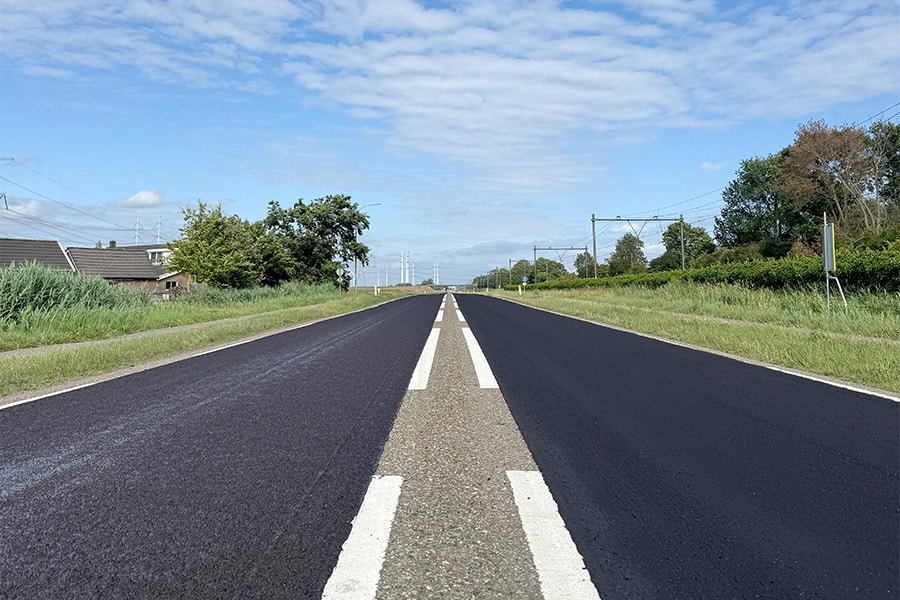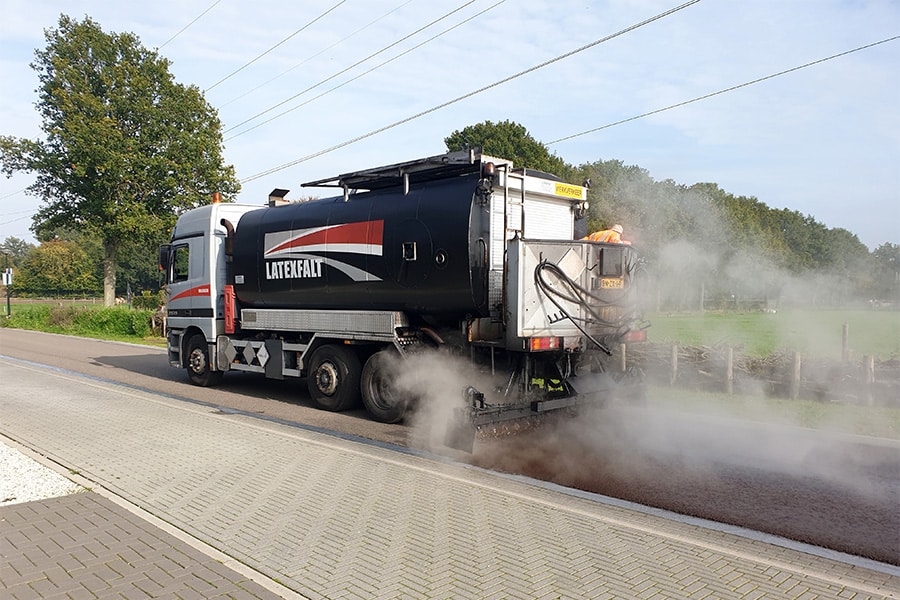
Looking up prestressing reinforcement with radar technology
Part of the widening and deepening of the A9 between Badhoevedorp and Holendrecht is the Schiphol Bridge. Naturally, this too will be tackled and widened on both sides. To anchor the new sections to the structure, anchors up to 2 meters 'deep' will be drilled into the existing structure. And of course these must not touch the pre-tensioning reinforcement. TerraCarta was engaged to use radar technology to map the reinforcement in the concrete in order to determine the position of the new anchors.

TerraCarta has become big on mapping underground cables and pipes. "To do this, we use all kinds of detection equipment," says Karel Meinen, CEO of TerraCarta. "To then identify these cables and pipes, a trench is dug at that position. So over the years we have built up quite a bit of knowledge and expertise in detecting and identifying cables and pipes. With that experience and technology, we are also able to look into concrete." As a result of the bulb plate floor issues, culminating in the collapse of the parking garage at Eindhoven Airport, TerraCarta has now measured the reinforcement in numerous buildings. "For example, the floors of the JuBi towers at the Turfmarkt in The Hague (the huge building of the Ministry of Economic Affairs, ed.) have been reinforced with 50,000 anchors, where we have reduced the error rate of detecting the existing reinforcement to virtually zero."

GPR and EML
In widening the Schiphol Bridge, construction consortium VeenIX, working on behalf of the Department of Public Works, faces essentially the same challenge as with the bulb plate floors. "Here, too, there is existing reinforcement that is logically not visible from the outside and whose exact location is not specifically indicated on drawings," Meinen knows. "Our job is to map the prestressing steel with high accuracy so that the anchors can be drilled safely and responsibly. The great thing is that we can 'just' use our measuring instruments for this, which also allow us to look into the subsurface digitally, or ground-penetrating radar technology (GPR) and electromagnetic localization (EML). Using measuring antennas in a range of frequencies, we look right through the concrete like X-rays. Using higher frequencies, we can detect the fine-grained reinforcement, while at lower frequencies we can get a nice view of the main reinforcement. And so, using a 3D wire model, we visualize what is happening in the bridge."

Highest possible security
In addition to GPR and ELM, TerraCarta deployed other tools to best locate the Schiphol Bridge's reinforcement. "For example, we used EML equipment to map grout anchors before," Meinen continued. "The combination of measurement techniques determines the certainty of what you are mapping. After all, you want to be able to check things. We also measured both at the top and bottom to calculate based on possible margins of error. And so we weigh numerous things against each other to make a judgment about with what accuracy and at what effort we can map the reinforcement. Because the more certainty, the more effort it takes. That's what we do: pursue the highest possible level of certainty. In addition, the bore that is set also still has a certain tolerance." The 3D wire model generated by TerraCarta is overlaid on the new boreholes to be set for a clash detection. "That way we indicate which bore, for example, needs to be moved 5 or 10 centimeters so that the existing reinforcement is not touched."
According to Meinen, it is the first time an artwork has been vetted in such a way. "We knew it could be done and have experimented with it in the past, but on this scale it was the first time for us. And immediately a success, too." To be continued, no doubt!




